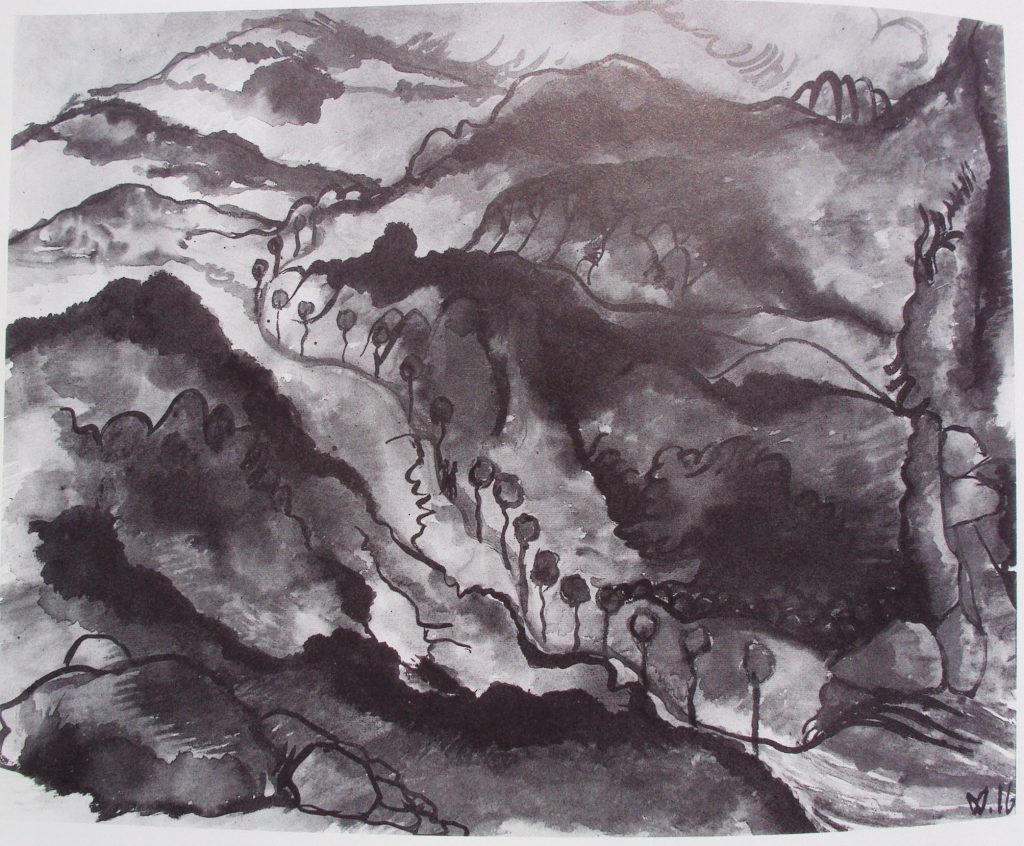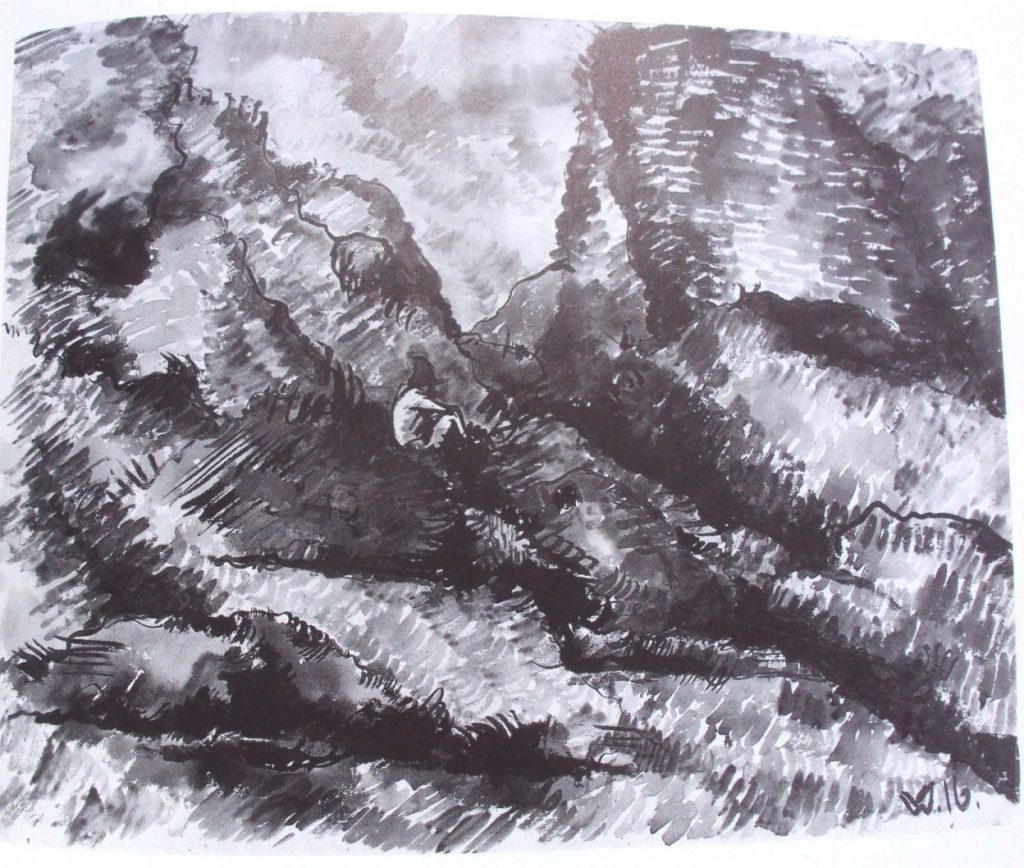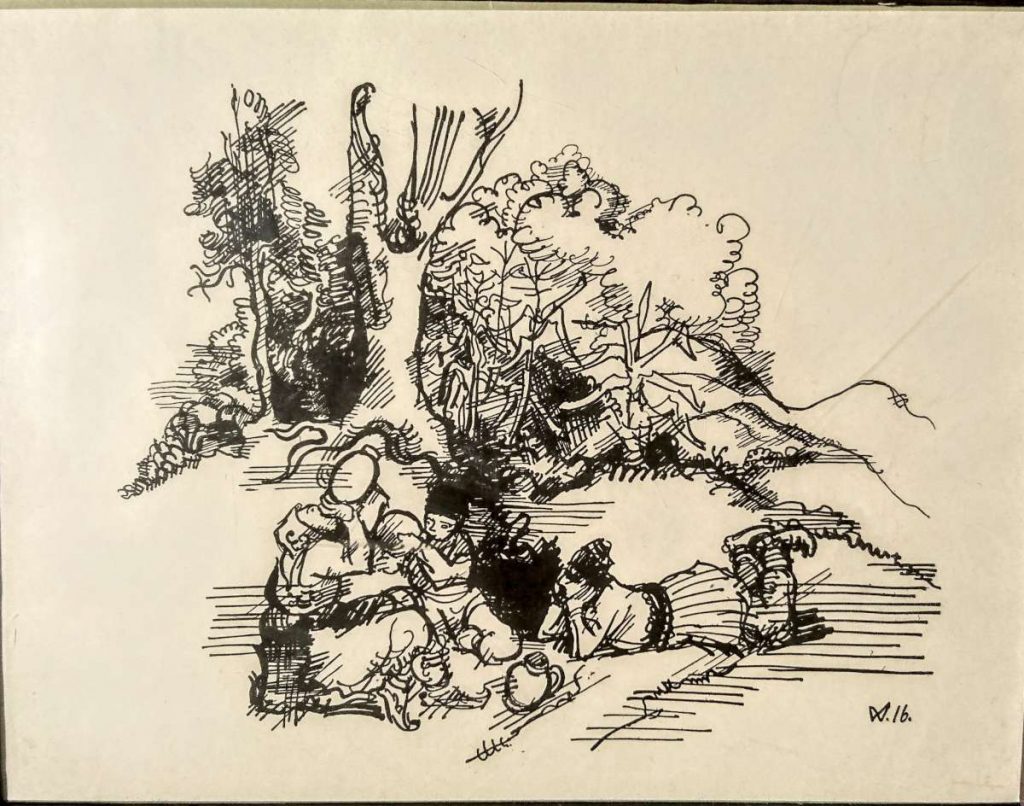Born in Soest on 27.01.1891. From 1908 studied at the private painting school of Georg Tappert in Worpswede. The work Morgner did in that early period was often highly realistic and frequently heavy and dark in mood. Tappert and Morgner became close friends during the brief year of training. During this early phase from 1911, Morgner traveled frequently to Berlin, where he encountered the schools of art then prevailing such as Pointillism and Futurism. He was also confronted for the first time with the work of van Gogh and early Expressionism. All these new styles exerted a formative influence on his creative drive. In 1911/13 he showed work at the Berlin New Secessionist and in 1912 at the Cologne Sonderbund exhibition. Magazines such as ‘Der Sturm’, ‘Die Aktion’ and the ‘Jahrbuch des Blauen Reiters’ featured his work. His pictures, which had previously dealt with working people in rural settings, became increasingly abstract – his efforts were now concentrated on conveying spiritual content. A clean break came in 1913, when Morgner was conscripted and sent to the war in France, Poland and Serbia and only had drawing materials with him. He turned primarily to drawings dealing thematically with Eastern European and Near Eastern culture as well as religious motifs. Some of these sheets reveal Surreal traits. Like so many of his fellow artists, Wilhelm Morgner died far too young. He fell in the Langemarck on 16.08.1917.
More information about Wilhelm Morgner can be found at:
http://www.wilhelm-morgner-stipendium.de/.
Wilhelm Morgner visited Macedonia, more precisely Skopje and Veles around 19.08.1916. In his personal diary, he said that he was delighted by the Macedonian landscape. One example of him Macedonian period works is: ‘Mazedonische landschaft 1917’ drawing, sold via auction house Hauswedel & Nolte Hamburg 11.06.1988. Several works from his Macedonian period are mentioned in the book: “Wilhelm Morgner, Gemalde, Zeichnungen, Druckgraphic – Munster Soest München 1991”


